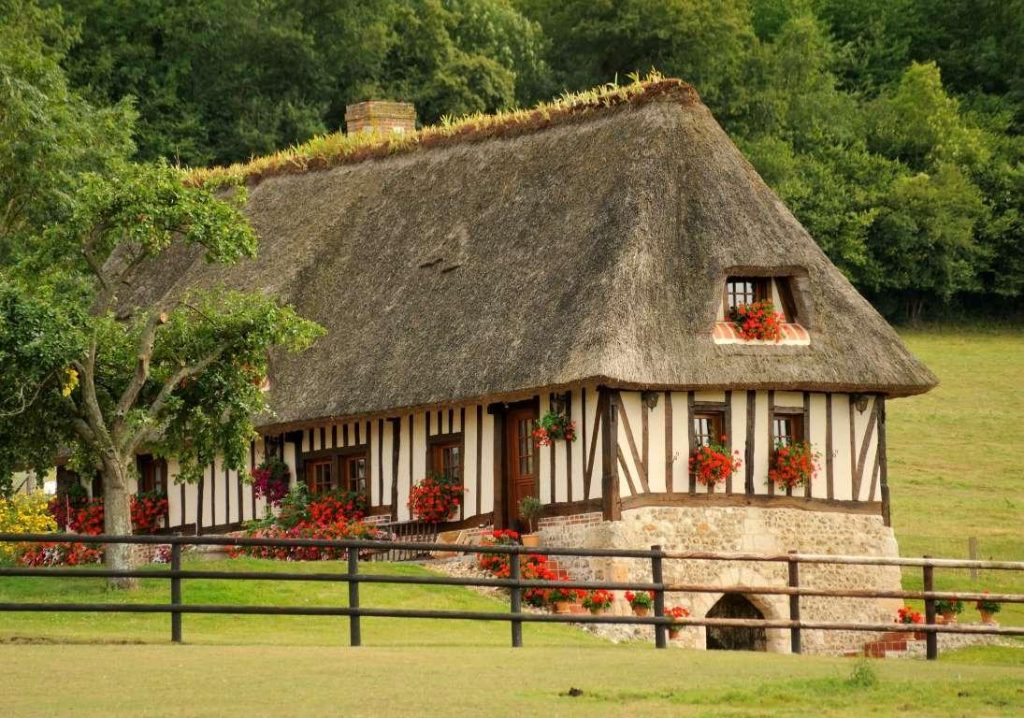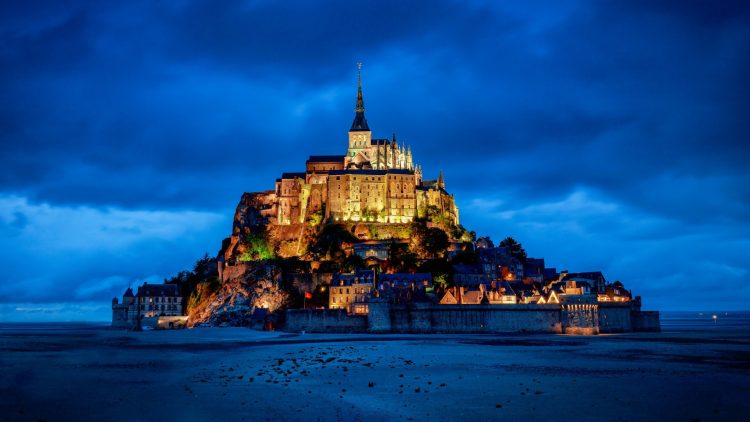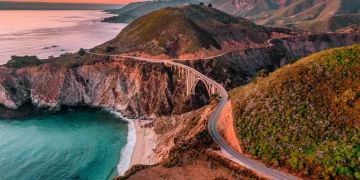In a solemn tribute to the past, France hosted the 80th anniversary of the Normandy landings this year, where people gathered on the once war-torn beaches to commemorate this pivotal moment in history. A special correspondent from The Global Times revisited these shores, now peaceful and serene, where the smoke of battle has long since faded into the annals of time. The beaches and hamlets that bore the brunt of fierce fighting have now transformed into one of Normandy’s most distinct tourist attractions. Visitors stroll leisurely, soaking in the beautiful vistas while reminiscing about the significant battle, enjoying a vacation unlike any other.
The Indelible Marks of Battle
Setting off from the ancient city of Bayeux in Normandy, our reporter cycled along the coastal roads towards Pointe du Hoc, passing by a quaint chateau. In mere minutes, the “end” of the Normandy cliffs came into view. Standing there, one could overlook the coastline and the rocky promontory where the Germans had set up key observation posts. It was here, at dawn on June 6, 1944, that the Allies made their surprise landing during Operation Overlord.
Following the assault route from the beach to the German defensive positions on the slopes, our reporter passed many abandoned fortresses. The firepower of these fortifications could have covered the entire beach. Along the way, an American monument stood, its surface densely inscribed with the names of those who sacrificed their lives.
Atop a nearby cliff stands the Pointe du Hoc monument, commemorating the valiant American soldiers who scaled over 100 meters of elevation to flank and attack German forces. Behind the monument, the former German positions are visible, the uneven terrain pockmarked with craters of all sizes, hidden only partially by the overgrowth, bearing witness to the intensity of the combat that once raged here.
Continuing along the coast, the American cemetery in Normandy comes into view. Perched on a hillside next to the beach, it overlooks Omaha Beach and the English Channel, sites of fierce resistance and heavy casualties during the landings. Over 9,000 soldiers rest here, their graves marked with uniform marble crosses, each etched with a name, rank, hometown, and date of passing. The white crosses stand solemnly against the backdrop of dark green shrubbery and vibrant green lawns, offering a sense of tranquility to the beholder.
A Town Bearing Witness to Military Ingenuity
During the entire Allied landing operation 80 years ago, the small town of Arromanches, not far from the beaches, witnessed a massive undertaking. Unlike the brutal intensity of Omaha Beach, Arromanches resembled a grand engineering project—continuously funneling soldiers and munitions into the European mainland to sustain the fight.
Arromanches, a small town with the typical charm of northwestern France, features tidy streets and simple customs. Bathed in sunlight and sea breeze, it feels untouched by the world’s strife. Tourists leisurely enjoy lunches before visiting the largest D-Day museum in Normandy.
The museum boasts an extensive collection of historical photos, artifacts, and models displayed in glass cases, offering a comprehensive view of the landings. Visitors are shown how the Allies constructed an artificial harbor out of reinforced concrete in record time—a feat of military engineering that was groundbreaking 80 years ago. Using the most advanced technology of the time, engineers facilitated the docking of large military ships off the coast, sinking giant concrete blocks to the seabed, and then connecting them with floating pontoons to transport personnel, armaments, and vehicles to shore for swift deployment to the battlefield.

Another gallery hosts a documentary produced by the British Naval Command, presenting the operation from a different perspective. The film simulates the bloody battles fought on the beaches by American, British, and French forces, ensuring the safe arrival of supplies.
Beyond the museum, a unique cinema atop a hill overlooking the coastline screens “The Price of Freedom,” a film shot on location with historical footage projected across nine screens, immersing viewers in the tumultuous era of warfare.
Throughout the town, remnants of the landing operations are preserved, especially the remains of the artificial harbor, which against the backdrop of the setting sun, serves as a dramatic playground for children, evoking a sense of science fiction.
Where Impressionist Masters Once Created
After the weight of war memories, the enchanting natural scenery of Normandy offers a delightful respite. Influenced by the warm currents of the Atlantic, the region is lush with abundant rainfall, wildflowers, and verdant vegetation, creating picturesque natural wonders like Mont Saint-Michel, dubbed the “Eighth Wonder of the World,” a testament to humanity’s integration with nature. The abbey atop Mont Saint-Michel stands as a beacon for pilgrims through the ebb and flow of tides.
The extensive coastline of Normandy is dotted with apple trees, their scent of cider accompanying travelers. The fine sands, the majestic cliffs, and the secret coves showcase nature’s splendor.
From Deauville to Honfleur and on to Rouen, the reporter’s journey captures the beauty of charming seaports, dotted sailboats, and towering church spires. Regardless of the weather or sunlight, these places are always enveloped in tranquility, where every snapshot is picturesque.
Normandy is also a haven for artists, having captivated Impressionist masters with its beauty and ambiance. Honfleur, with its half-timbered streets, fairytale-like ports, and beaches, is among the most endearing spots in the region. It is replete with memories of Impressionist painters—Monet, Boudin, Bazille—who cherished this coastline and created classic works here.
As summer yields to autumn, driving or cycling along country lanes, the occasional creaking of wooden houses in the wind, charming little chateaus hidden among the trees, and cows grazing leisurely on the grass, their bells and lowing adding to the pastoral symphony… Normandy’s beauty is abundant, a single vacation hardly enough. The sea lies tranquil, children play carefree on the beaches, and elders tend to flocks on the hillsides, all immersed in a scene of peace that intoxicates the soul.





















